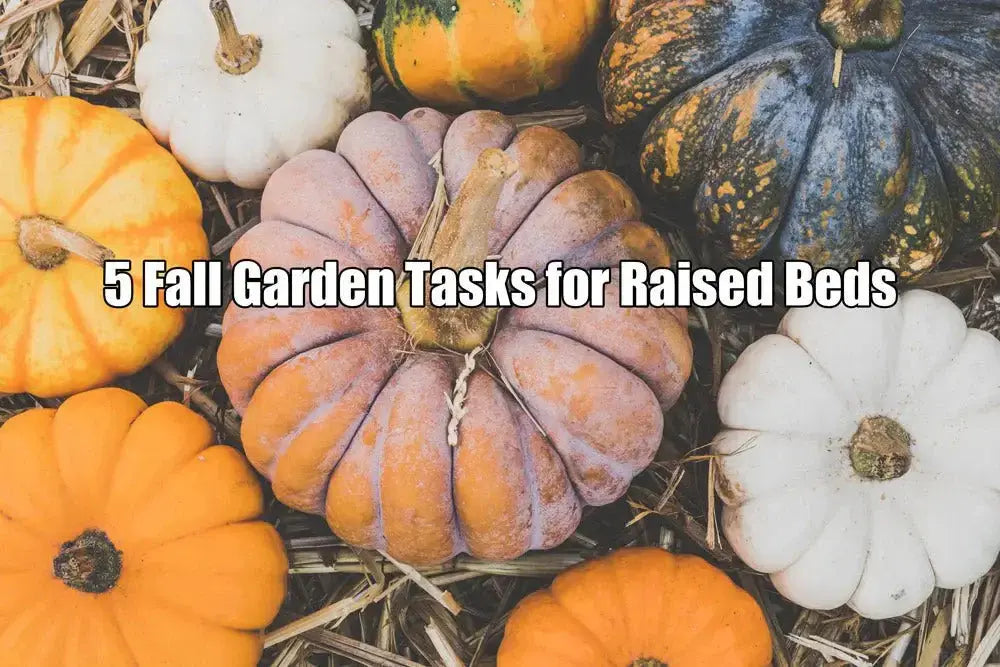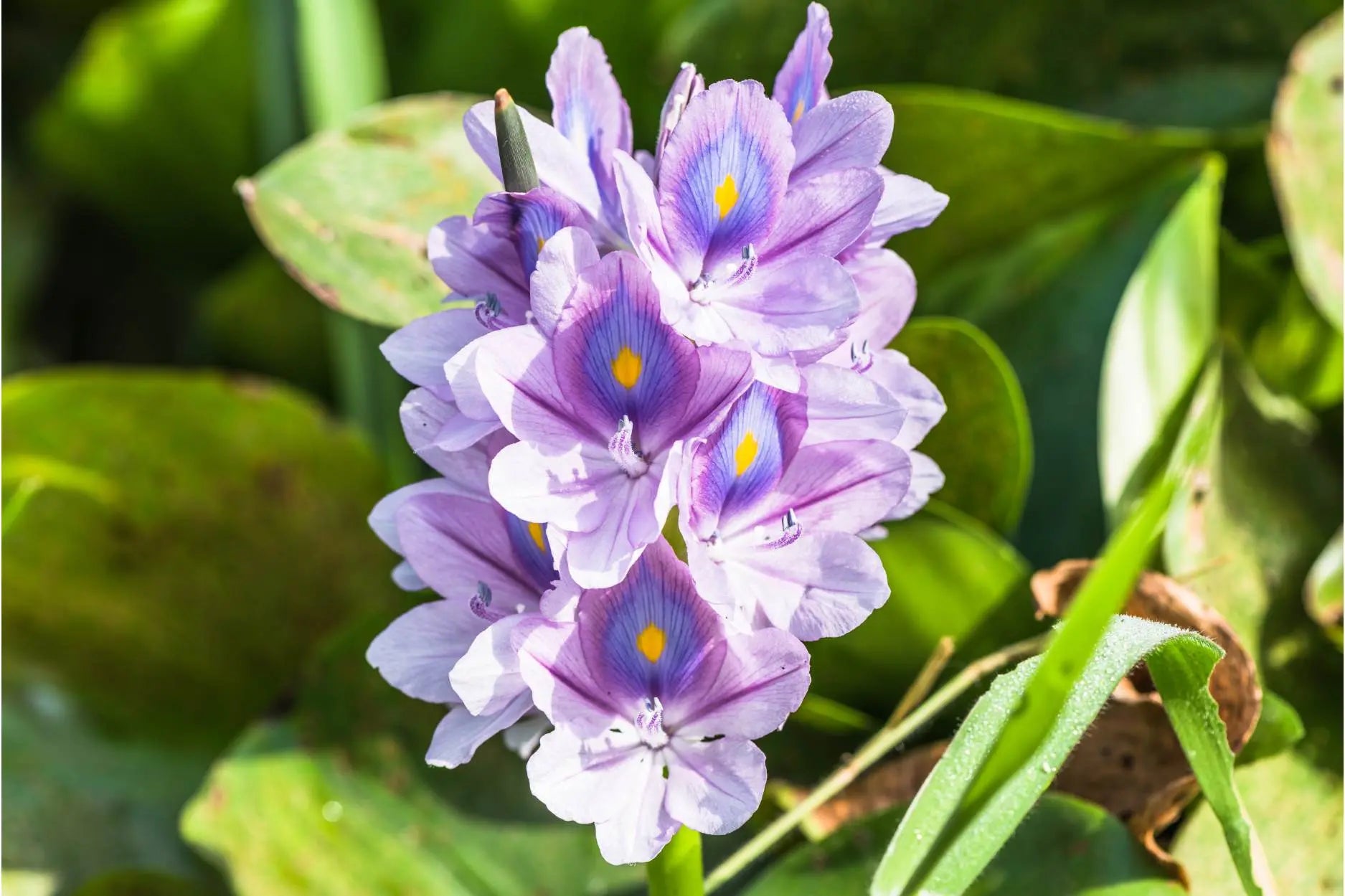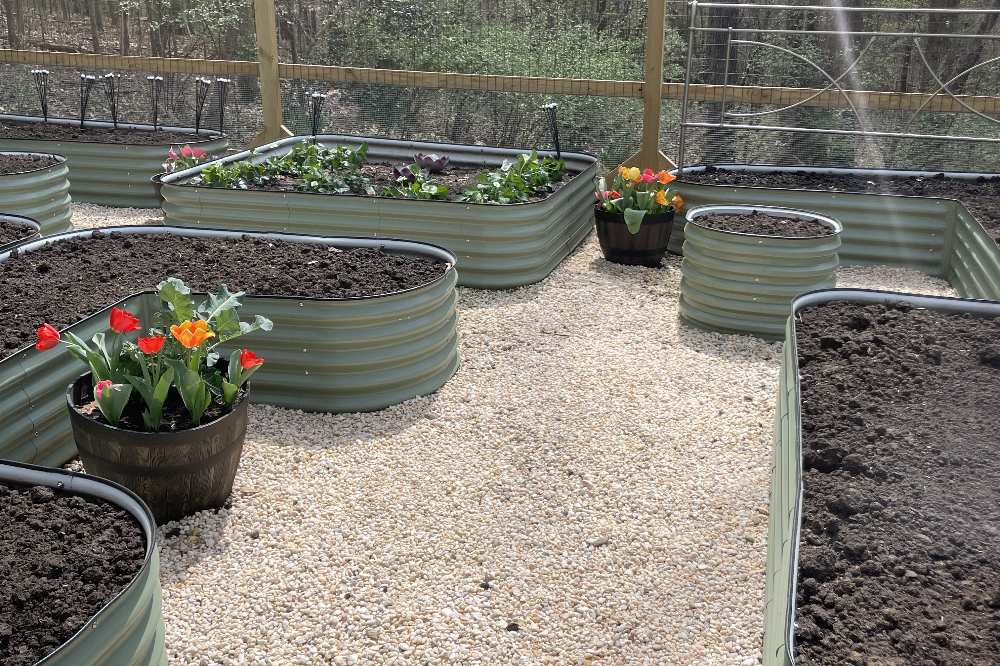3 Key Points to Keep Veggies Fresh after Picking from Raised Garden Bed
Autumn is the season of harvest. How many different types of fruits and vegetables have you harvested from your raised garden bed so far? Vegetables are an essential ingredient on the table, but storing them is not an easy task, and many people have had similar experiences with vegetables that rot before they can be eaten. So what can be done to save the autumn harvest so that people can eat fresh, nutritious ingredients in the winter? This article will teach you how to preserve vegetables!

Four kinds of efficient food storage methods
Refrigeration method:
Low temperatures can slow down the process of chemical reactions in vegetables, reduce enzyme activity, and inhibit microorganism reproduction, allowing vegetables to be preserved for a longer period of time if stored in the refrigerator or in the natural environment of outdoor freezing during the winter.
Boiling method:
Boil the food and then save it, which is actually high-temperature sterilization. Put the food in boiling water to sterilise it, and then dry it to preserve it. Some meat or some vegetables can be used in this method.
Sealing method:
The vegetables will be packed in sealed boxes, bags, and other containers. The container will be covered or sealed, isolating the food from the air, not only to reduce moisture loss but also to protect the food from air pollution.
Drying method:
The drying method is with the sun, fire, smoke, or wind to remove the water in the food. That can prevent food spoilage and rotting.
The refrigeration and sealing methods are two of the most commonly used. Moisture increases the likelihood of the vegetables rotting. However, keeping the vegetables at a low temperature and isolated from oxygen by wrapping them in cling film can slow down aerobic cellular respiration, preserving freshness.
How to store fresh vegetables for a long period-(1)
As for how to keep fresh vegetables fresh after picking from your
Carrots preservation:
Wash them and place them in a dry place for a day to allow the water on the surface of the carrots to evaporate. Then, to keep it fresh, cut off the green leafy part of the carrot because its moisture will be absorbed by the leaves, and wrap it in plastic wrap or place it in a sealed bag in the refrigerator.
Eggplant preservation:
A layer of wax coats the skin of the eggplant. The wax layer is vulnerable to microbial attack and spoilage once it has been washed away or mechanically damaged. As a result, the eggplant should not be washed but stored in the refrigerator with plastic wrap or a sealed box or a cool, ventilated place.
Tomato preservation:
After washing and drying the picked tomatoes, put them in a plastic bag and put them in the refrigerator. If you keep them in a cool, dry place, you should open the bag once a day for 5 minutes of ventilation. If there are any water droplets in the bag, wipe them away before sealing it.
Pumpkin preservation:
If the skin is intact, place the pumpkin in a cool, ventilated place with wood chips or multiple layers of toilet paper on the bottom, not directly on the ground, to keep it fresh for 4 to 5 months. If you cut the pumpkin open, you need to scoop out all the flesh, then wrap the cut side tightly with plastic wrap or store it in a crisper and then put it in the refrigerator. This is because the flesh of the pumpkin starts to deteriorate.
Zucchini preservation:
After picking the zucchini, thoroughly wash and dry it before tightly wrapping it in plastic wrap and storing it in the refrigerator.
Lettuce preservation:
If you leave lettuce out for a while, it will soften and change color. You can remove the heart of the lettuce and then insert wet paper towels into it to allow the lettuce to absorb water. Wait until the paper towels are dry before removing them, and then place the lettuce in a plastic bag before putting it in the refrigerator. This method works well with most leafy greens, including spinach, and chard. If you put them in there right away after picking them out of your raised garden bed, leafy greens don't last long in the refrigerator.
Cilantro preservation:
Cilantro with roots, bundled into small bundles, wrapped in a layer of paper, put in a plastic bag or sealed bag, root side up, will be placed upright in the refrigerator. Alternatively, you can loosely tie the bag and place it in a cool place with the cilantro roots facing upward. In this way, the cilantro can at least last for a week.
Scallion preservation:
Wash the scallions, then wrap them in a clean cloth or kitchen towel that can absorb moisture before storing them in a sealed bag or plastic bag in the refrigerator for several days. Or take a small pot, bury the parsnip roots in it with the appropriate amount of water, and eat whenever you want. This method is appropriate when a small amount is frequently taken.
Garlic preservation:
Garlic is an aromatic vegetable that should be preserved in its natural state. It can be stored for an extended period of time by placing it in a net bag and hanging it in a cool, well-ventilated location indoors. If you want to store it in the fridge, peel off the outer coat of garlic and place it in a sealed box.

How to store fresh vegetables for a long period-(2)
Freshly harvested vegetables are first pre-cooled and dissipated to reduce the temperature of the vegetables and thus extend their shelf life. Separate the vegetables and spread them out in a cool, ventilated area to dry.
Do not wash vegetables before storing them.
Leafy greens, in particular, should not be washed before storage. Some ground stem and fruit vegetables can be washed because there is a lot of soil when picking from your raised bed, but only with clean tap water, preferably flowing water, and then dried and preserved. Overall, the less water there is in the vegetables, the more resistant they are to storage. Furthermore, vegetables such as broccoli, carrots, peas, zucchini, and so on. If you can't finish them within a week, blanch the vegetables, then cool and freeze them in plastic bags in the refrigerator.
Do not open the refrigerator frequently or for a long time.
Do not open the refrigerator door frequently or for a long time to get vegetables. Temperature fluctuations are bad for freshness. The refrigerator's freezer temperature should be adjusted to around 35.6-39.2 ° F, with a gap of about 1 inch all around. Check the quality of the vegetables after 1-2 days. To avoid contamination of other vegetables, yellow or decaying leaves should be removed from leafy vegetables.
How to store fresh vegetables for a long period-(3)
To achieve the effect of long-term storage and preservation, fruits and vegetables must be stored at a low temperature, low oxygen, and moderate humidity, which can reduce the rate of cellular respiration and the consumption of organic matter.
Home vegetable preservation note: Vitamins are easily destroyed by oxidation in the air at room temperature. Vitamins can be preserved by saving the outer leaves and shell. As a result, do not peel off the outer leaves of leafy vegetables; do not peel off the skin of onions and garlic; do not peel off the bean pods before consumption. Sunlight turns the skin of potatoes green, which produces toxic matter, so potatoes should be stored away from light.
Nitrite levels in fresh vegetables are extremely low. The nitrite content is significantly higher if the storage time is too long, when there is decay and deterioration. When stored at a low temperature in the refrigerator, the vegetable's respiratory strength is relatively weak, and it is difficult to decay. Vitamin C, total sugar, and nitrite content remain stable.

The ideal storage period for vegetables
Vegetables are classified into leafy vegetables, roots and stems, mushrooms, and so on. Vegetables should be stored at 32°F–50°F in general, but the storage temperature varies depending on the variety.
1. Leafy vegetables
1. leafy vegetables
These vegetables are easy to rot and lose nutrients. The vast majority of leafy vegetables should be stored at a cool temperature of 32 to 35.6 °F, but not below 32 °F. To avoid frostbite, green leafy vegetables should be stored in the refrigerator in a plastic bag or sealed bag, not close to the inner wall of the refrigerator. It is best not to store items for more than three days.
2. Roots and stems
These vegetables have relatively less water content and are easier to preserve, such as potatoes, carrots, white radishes, onions, cabbage, etc.
It is recommended to clean off the surface soil before storing it in the refrigerator or a cool and ventilated place for 7–10 days. Apples and potatoes are "good friends", and when combined, their shelf life can be doubled. Remember to wash and dry the potatoes and apples before storing them in the same sealed bag.
3. Mushrooms
Fresh mushrooms have a short shelf life in the refrigerator, lasting about 3–4 days. It is preferable to dry the mushroom surface before storing it. Putting a sheet of kitchen paper underneath and another on top, and storing it in a sealed bag to keep it dry.
Conclusion
At this peak period of harvesting time in your raised beds, it's the right time to acknowledge more about vegetable storage. The right and longer storage of vegetables helps in planning your meals and makes your kitchen routines easy and quick.


